Heeeyho Readers! Have you ever tried to make your bicycle faster?
A friend and I got into an interesting conversation about bicycle bearings.
"Will better wheel hubs make my bicycle faster," he asked. I told him it depends. Depends on what he's comparing: isolated hub bearings, a whole wheel set, bearings vs. cup-and-cone, etc.?
Common knowledge states that hubs with quality bearings indeed save energy and make the wheels spin easier compared to cheap entry level parts (e.g. cheap chinese bearings or poorly adjusted cup-and-cone hubs). It's a combination of better-machined components yielding stricter tolerances and smoother rolling surfaces. In that sense, yes, upgrading from an entry level set of wheels to intermediates will be quite noticeable. However, is there real gains for someone already using intermediate parts? How about paying extra for industry-grade bearings, is it worth it?
The whole debate revolved around finding ways to make the bikes faster, which prompted the idea for today's post. Let's discuss bearings, plus some personal tips for the fella cyclists regarding the subject.
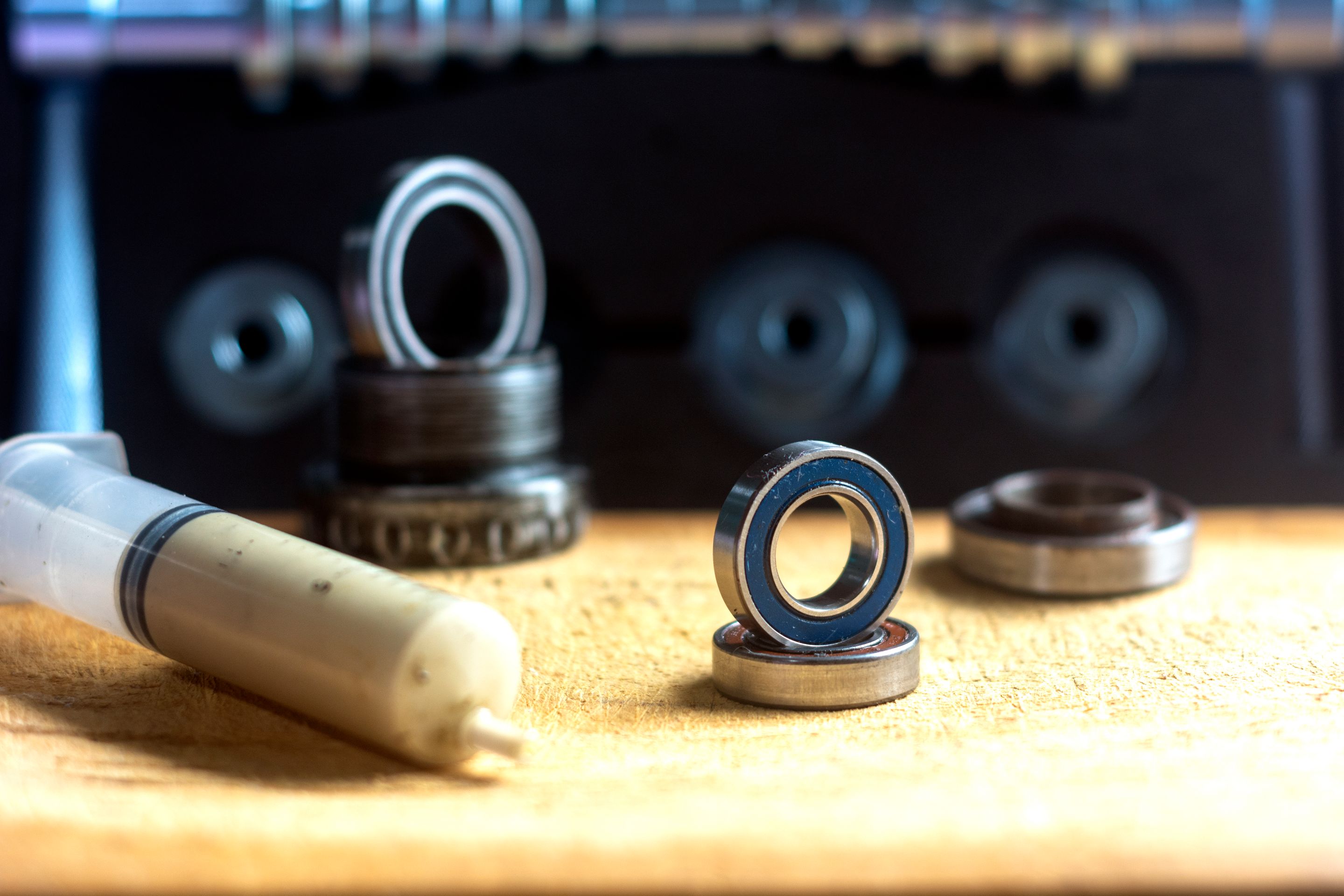
After much talking, we got to the following assumptions:
1. Amateurs power output vary so much that 10 Watts gain in rolling parts makes no difference.
2. Amateurs gain more from training than from expensive parts.
3. There's no huge difference between bearing quality offered in most intermediate hubs/bottom-brackets.
4. Grease quality and correct amount is more important than paying extra for premium bearings.
5. Biggest gain in more expensive parts is in durability and not on speed.
Why paying extra then?
"For durability", I reinforced. We want our bearings (hubs and bottom-brackets) to last as long as possible to avoid unnecessary maintenance costs. That, of course, is pricey.
Cheap bearings are often machined using low quality steel while also having less quality control, hence, are a lot less durable. Industry-grade bearings (SKF, NTN, FAG, etc) will last more than third grade counter-parts, whilst also having less friction due to stricter construction tolerances.
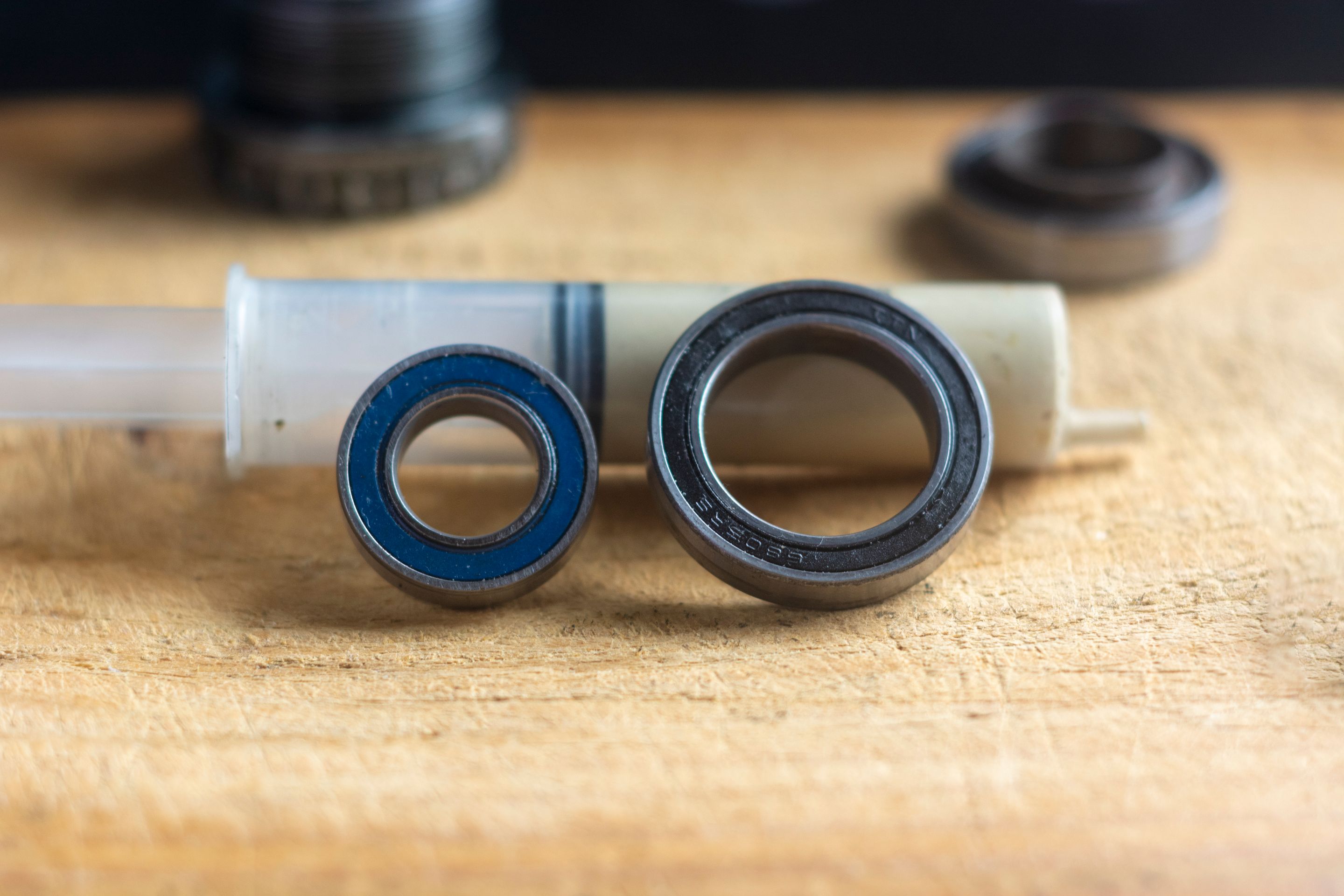
How about the speed?
In my view, the correct use of grease is more important than the installation of super duper high quality industry-grade bearings. I often see mechanics packing bearings full of grease 'till it spills through the seals. The result? Excessive grease will make the balls inside the bearing slide instead of rolling, thus creating more friction; not enough grease will generate heat and greatly wear out the bearing. Read further to learn more.
The same applies for the grease thickness. Thicker greases generate more rolling resistance than oil, for example. Choosing the correct grease can potentially make the wheels spin faster.
All about greases
Alright. I believe we established two points here:
- more expensive bearings have greater impact on durability than on speed
- the correct use of lubricant can influence speed
How can we take advantage of available lubricants? The best way is to, first, chose the correct one. Grease comes in different consistency grades, as follow.
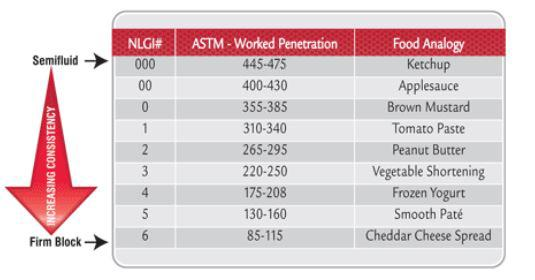
Our bicycles are well-served with grades NLGI 1 or 2, which are common greases, including premium bicycle-specific versions offered in bicycle stores. Anything higher than 2 will increase friction greatly.
Sure, you may have heard of pro athletes using oil in their bearings. Myth or not, they also have a plethora of wheels to swap and mechanics servicing their bicycle after each race — not our case.
There are many other qualities to account for (such as viscosity, water resistance, corrosion resistance, etc), but let's spare the headache. Basically, for hub and bottom-bracket bearings, any lithium or calcium-based grease will work perfectly fine. I personally use calcium-based maritime (NLGI 2) grease because it's cheap and readily available at the local hardware store. My mechanic uses the famous Shimano grease, which is also grade 2.
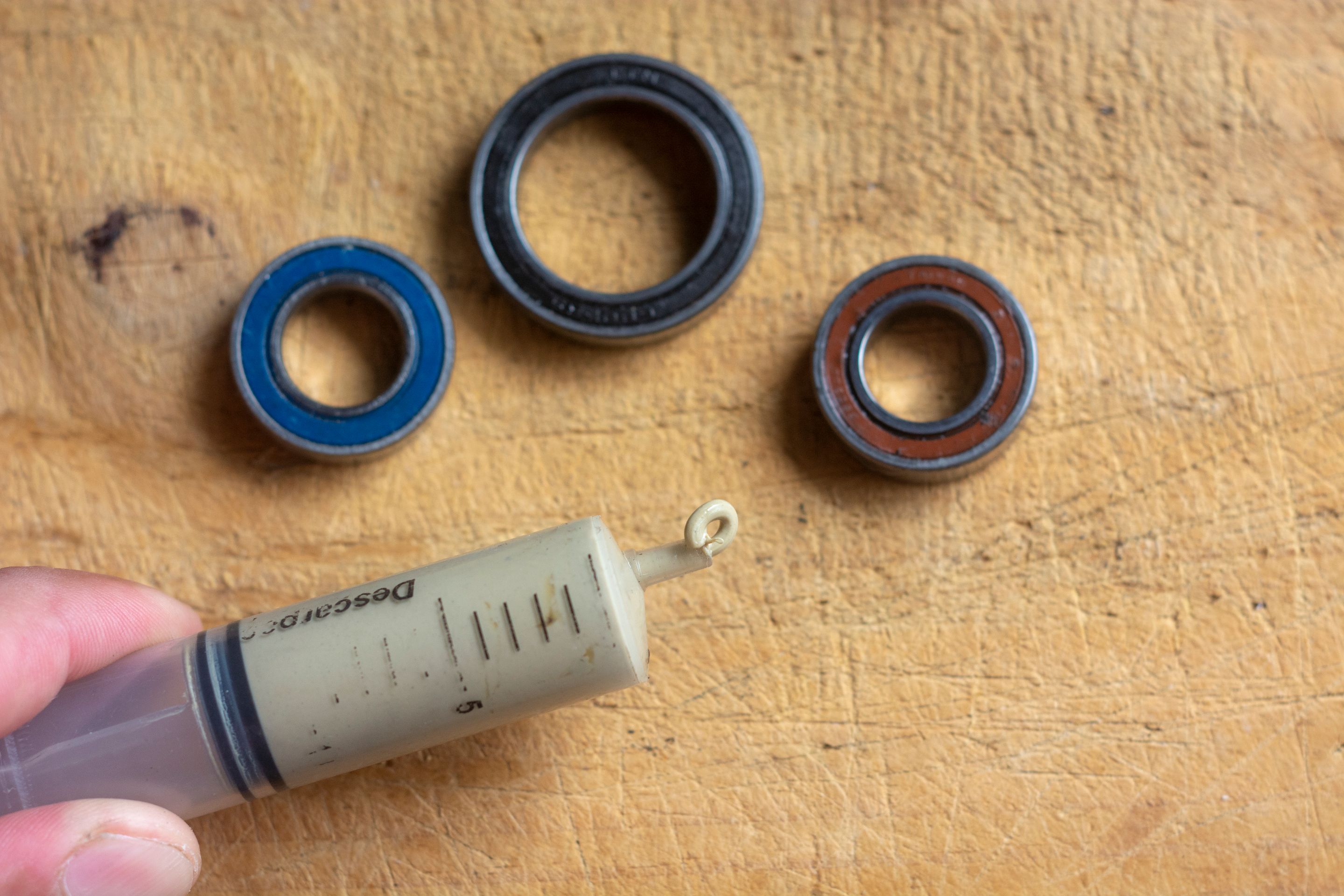
The real secret is packing the correct amount of grease into the bearings. As mentioned before, grease in excess creates a lot of drag and prevents the balls from properly rolling (slide effect). Here's how the industry determines:
- 1/2 to 2/3 of the free space in the bearing when operating speed is less than 50% of the limiting speed
- 1/3 to 1/2 of the free space when the speed is more than 50% of the limiting speed of the bearing
Bicycle bearings operate in super low RPMs compared to spec, meaning we can safely fill 1/2 of the bearing with grease; one side filled lets the grease spread to the other side. See below.

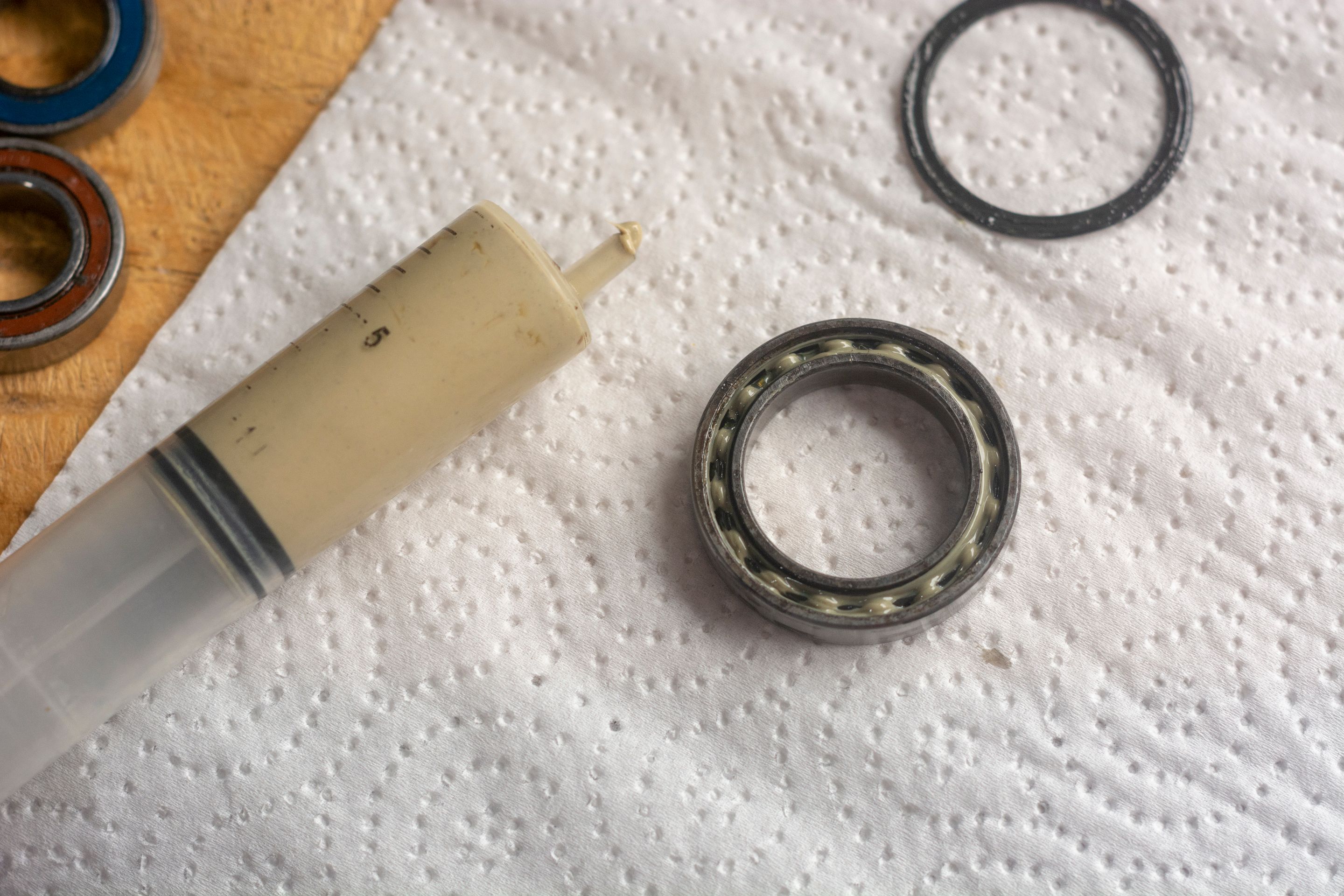
This is enough lubricant to safe-guard the bearing's functionality without creating a lot of drag. I'm yet to test different grease types and densities to test for durability. Rolling resistance, at this level, is neglectable and only measurable in lab. Why bother?
Ceramic bearings
Oh, that fuzzy topic. Do we really want to delve into that? Let me know in the comments if you'd like to know more about ceramic bearings. I think it's an interesting topic, but only if more Hivers are interested.
Conclusion
All the information I know about bearing lubrication is condensed in here. Even though resumed and simplified, I believe there's a lot to take from the info if you're into servicing bicycles at home. In essence, the correct lubricant and its use has more impact than buying expensive bearings/hubs/bottom-brackets. Change my mind?
I'd love to hear your instance on the subject and learn from your experience.
Peace.
If you enjoyed this post consider leaving your upvote for a hot coffee.
Find me on Twitter: https://twitter.com/mrprofessor_
~Love ya all,
Disclaimer: The author of this post is a convict broke backpacker, who has travelled more than 10.000 km hitchhiking and more than 5.000 km cycling. Following him may cause severe problems of wanderlust and inquietud. You've been warned.
